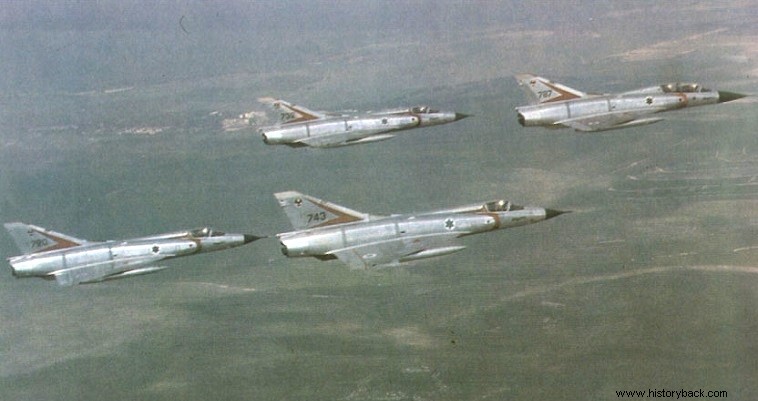
On January 24, 1970, Egyptian President Nasser visited Moscow. The Soviet Union had previously supported Egypt fighting Israel in the so-called "War of Attrition", with the Egyptians refusing to accept their crushing defeat in 1967. Based on Nasser's contacts in Moscow, an entire Soviet air division was sent to Egypt. . The division in question had a brigade of MiG-21 fighters, as well as anti-aircraft missiles and radars.
A Soviet Airborne Division
The Soviets deployed, for the first time in the Middle East, SA-3 missiles and assumed aerial coverage of Cairo, Alexandria and the Aswan Dam , allowing Egyptian pilots to attempt the destruction of the Israeli air force. The Israelis did not know about the arrival of the Soviets. They realized their presence only at the end of February. It was then proposed to attack Soviet missile positions, as a warning. But the proposal was not heard as Israel did not wish to engage openly with the USSR.
Instead the Israelis decided to launch attacks against what they believed to be Egyptian positions in the Sinai. On April 13, however, MiG-21 fighters intercepted Israeli F-4 Phantoms in the area. The event enlivened the Egyptians. So on April 25, two Egyptian II-28 bombers bombed Israeli positions. But both were shot down. Three days later it was the turn of two Egyptian Su-7s to be shot down. On June 30 two Israeli F-4s were shot down by SA-2 missiles. On July 5 another Phantom was shot down by the same missile. It was obvious that the Soviets had organized the Egyptian air defense.
Israeli air strike
Immediate Soviet involvement led the US to supply Israel with electronic countermeasures systems. However, another two F-4s were hit by SA-3 missiles. One aircraft went down while the second returned to its base badly. A little later a Soviet-piloted MiG-21 hit an Israeli A-4 Skyhawk with an AA-2 missile. The Israelis then decided to retaliate by organizing Operation Rimon 20. On July 30, 1970, their best pilots with 12 Mirage IIIs and four F-4s flew over Sinai. Four Mirage IIIs were the decoy. The Soviets took the bait and attacked with MiG-21 fighters.
Aerial combat
Abraham Salmon in his Mirage III attacked first and with a successful shot hit the first MiG in front of him. He then turned on two MiGs pursuing the Israeli F-4s. Attacking from the "tail", he hit with an AIM-9D Sidewinder missile, the MiG of pilot Nikolai Yurchenko, who was killed. At the same time Asser Snir also hit the MiG of squadron leader Yevgeny Yakovlev with an AIM-9D missile, but he managed to abandon it. Immediately afterwards it was hit by a Soviet AA-2 missile and was forced to return to its base.
Aviem Sela, at the same time, saw a MiG in pursuit of the Phantom. With a classic "Immelman" maneuver, he managed to get behind the enemy fighter and shoot it down with an AIM-9D missile . His victim was squadron leader Georgi Sikrin. Avihu bin Nun's Phantom also shot down another MiG with an AIM-7 Sparrow missile. Finally two Mirages attacked the MiG flown by Vladimir Zhuravlev. The Soviet aircraft was hit by a missile but not destroyed. Finally Salmon emptied his supply of shot from his cannons upon him. However, having no more fuel, the Israeli drove away. The Soviet aircraft went down and its pilot was killed.
The Israelis prevailed state by state. A total of five MiG-21s were shot down – three Mirages shot down, two F-4s, while they themselves did not lose any aircraft. Only one Mirage was affected. It is worth noting that the Egyptian pilots who until then were treated with arrogance by their Soviet colleagues were also happy with the result... However, on August 3, the Israelis lost another F-4 to an SA-3 missile, while another was seriously damaged. The defeat of the Soviets, however, resulted in the cessation of hostilities on August 7.
